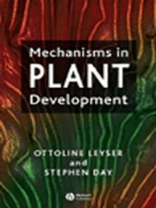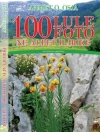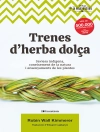Intended for undergraduate and graduate courses in plant
development, this book explains how the cells of a plant acquire
and maintain their specific fates. Plant development is a
continuous process occurring throughout the life cycle, with
similar regulatory mechanisms acting at different stages and in
different parts of the plant. Rather than focussing on the life
cycle, the book is structured around these underlying mechanisms,
using case studies to provide students with a framework to
understand the many factors, both environmental and endogenous,
that combine to regulate development and generate the enormous
diversity of plant forms.
* * New approach to the study of plant development and a refreshing
look at this fast-moving area.
* Authors focus their discussion on the basic mechanisms which
underpin plant development, tackling the fundamental question of
how a single cell becomes a complex flowering plant from a cellular
perspective.
* An up-to-date, modern text in plant development for advanced
level undergraduates and postgraduates in plant science.
* Thought-provoking treatment of a difficult subject, the text
will satisfy the needs of advanced level undergraduates and
postgraduates in plant science.
* Experimental case studies throughout.
* The artwork from the book is available at
www.blackwellpublishing.com/leyser
Spis treści
Preface, viii
Introduction, IX
Sources for Figures, xi
Chapter 1: An introduction to flowering plants, 1
Alternation of generations, 1
Gametophyte development, 1
Development of the sporophyte, 3
Further reading, 18
Chapter 2: Characteristics of plant development, 19
Plant cells, 19
Larger patterns, 24
Theoretical framework for the study of developmental mechanisms, 26
Conclusions, 27
Further reading, 27
Chapter 3: Cell-intrinsic information, 29
Lineage, 29
Case study 3.1: Laser ablation of cells in the Arabidopsis root tip, 34
Case study 3.2: Green-white-green periclinal chimeras, 36
Case study 3.3: Mutations affecting division patterns, 39
Relationship between age and position, 43
Case study 3.4: Mutations affecting the rate of leaf initiation in Arabidopsis, 44
Conclusions, 46
Further reading, 46
Chapter 4: Primary axis development, 48
Embryonic axes, 48
Case study 4.1: Longitudinal axis of the Fucus embryo, 49
Case study 4.2: Longitudinal axis of the Arabidopsis embryo, 54
Case study 4.3: Radial axis of the Arabidopsis embryo, 64
Conclusions, 71
Further reading, 71
Chapter 5: Axis development in the leaf and flower, 74
Leaves, 74
Case study 5.1: Adaxial-abaxial axis of the leaf, 75
Case study 5.2: Proximodistal axis of the leaf, 84
Case study 5.3: Determinate nature of leaf development, 87
Flowers, 91
Case study 5.4: Radial axis of the flower, 92
Case study 5.5: Adaxial-abaxial axis of the Antirrhinum flower, 100
Conclusions, 104
Further reading, 105
Chapter 6: Position relative to a particular cell, tissue or organ, 110
Case study 6.1: The pattern of trichomes on the Arabidopsis leaf, 111
Case study 6.2: The pattern of root hairs in Arabidopsis, 116
Case study 6.3: Phyllotaxy, 123
Case study 6.4: Coordination of leaf and vascular development, 131
Conclusions, 134
Further reading, 134
Chapter 7: Light, 138
Light perception, 138
Developmental responses to light, 143
Case study 7.1: Light-induced germination, 143
Case study 7.2: Seedling etiolation and photomorphogenesis, 146
Case study 7.3: Shade escape, 151
Case study 7.4: Phototropism, 154
Case study 7.5: Photoperiodic control of flowering, 156
Conclusions, 161
Further reading, 161
Chapter 8: Environmental information other than light, 165
Case study 8.1: Gravitropism, 165
Case study 8.2: Thigmomorphogenesis, 172
Case study 8.3: Effects of uneven nutrient supply on root development, 177
Case study 8.4: Vernalization, 180
Conclusions, 186
Further reading, 186
Chapter 9: The coordination of development, 190
Case study 9.1: Initiation and maintenance of the shoot apical meristem, 191
Case study 9.2: Transition from embryonic to post-embryonic development, 200
Case study 9.3: Phase transitions in post-germination development, 203
Case study 9.4: Shoot branching, 213
Conclusions, 219
Further reading, 220
Chapter 10: A comparison of plant and animal development, 224
Control of cell fate, 225
Development of pattern, 226
Consequences of autotrophy versus heterotrophy, 229
Conclusions, 230
Further reading, 230
Index, 233
O autorze
Ottoline Leyser is a reader in plant developmental genetics
at the University of York.
Stephen Day is a science writer, also in York.












